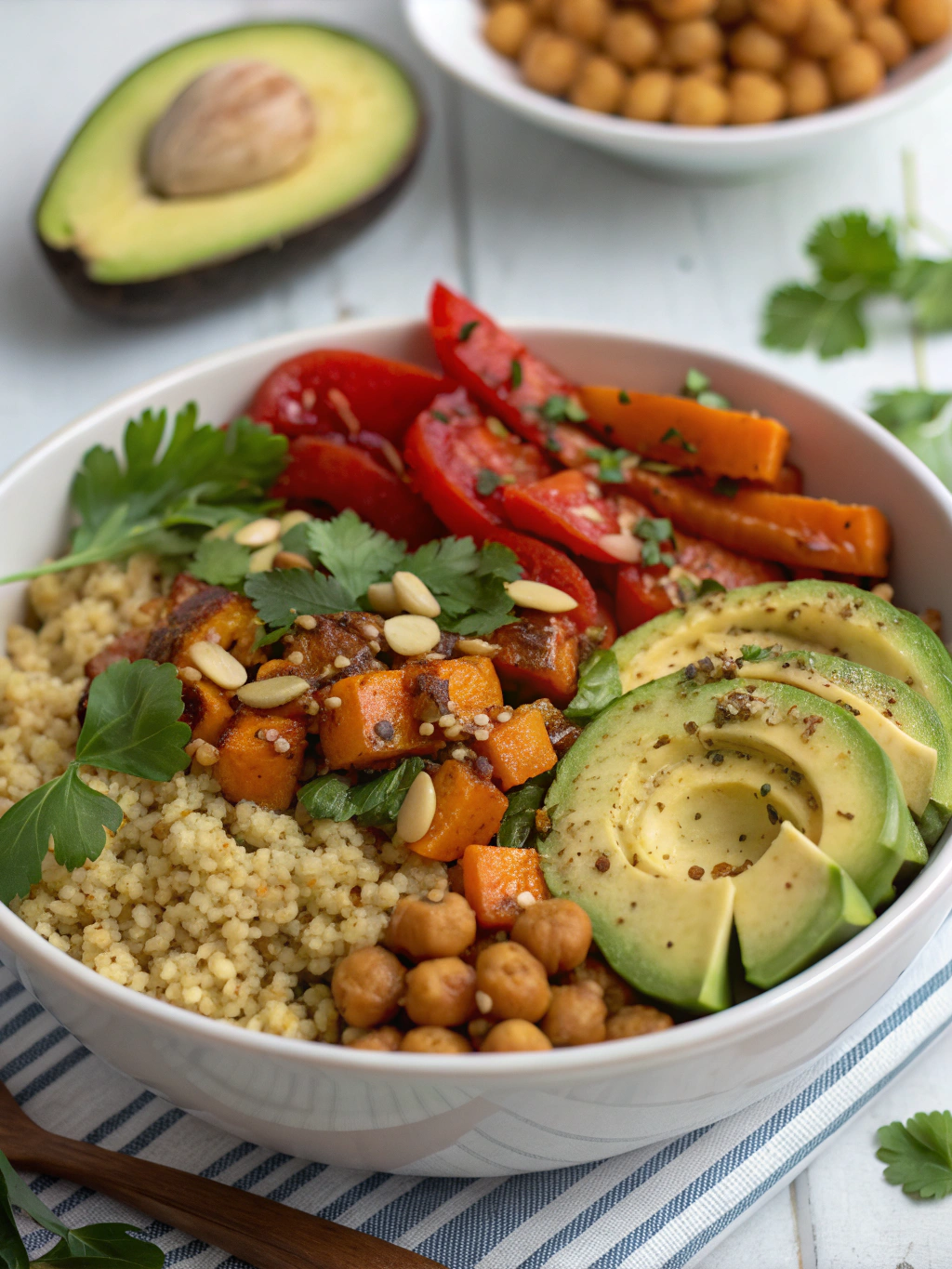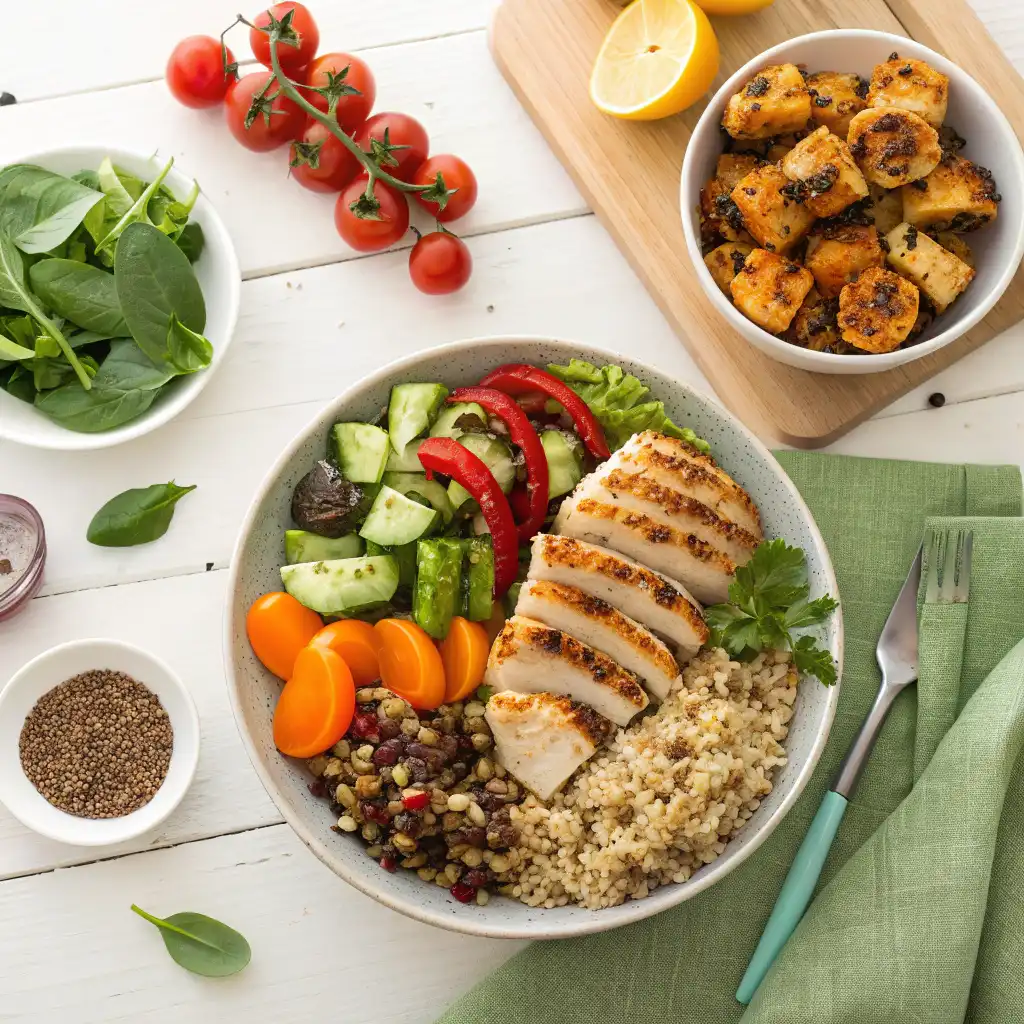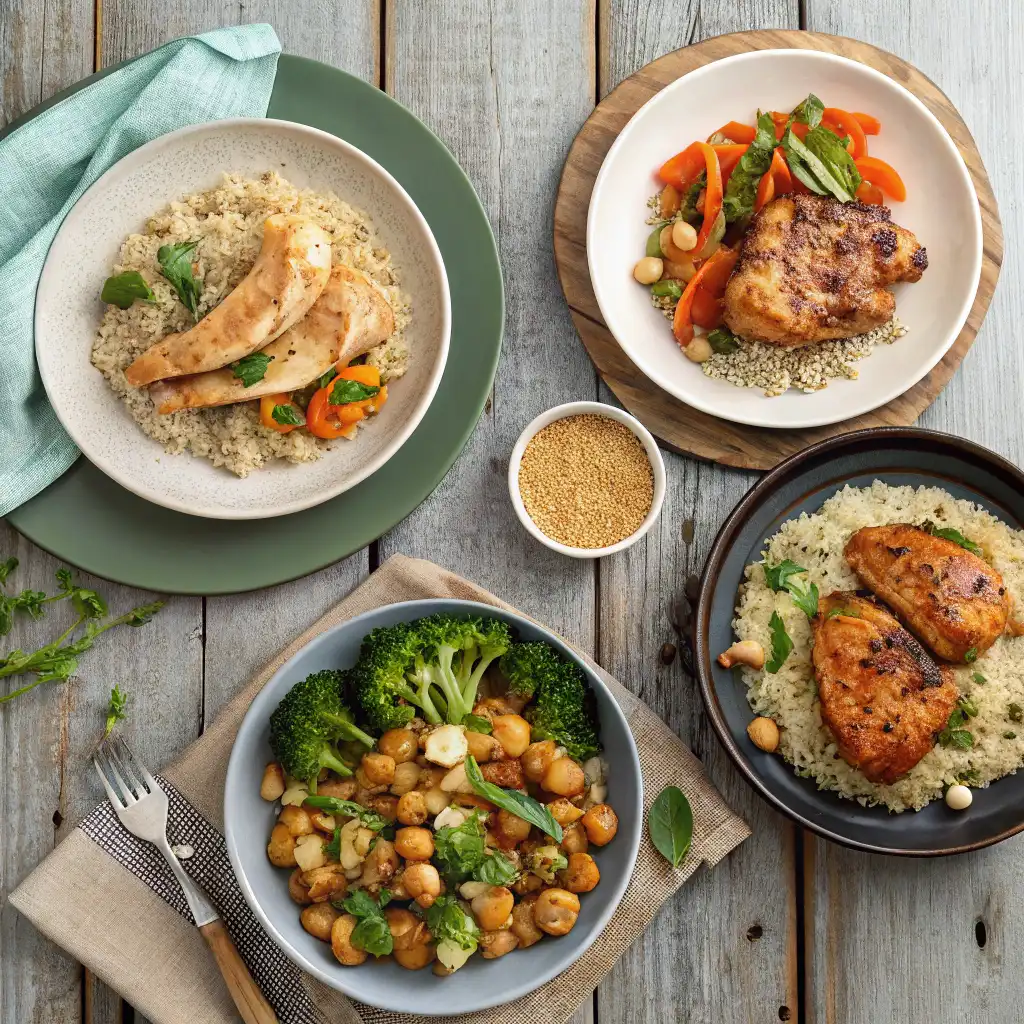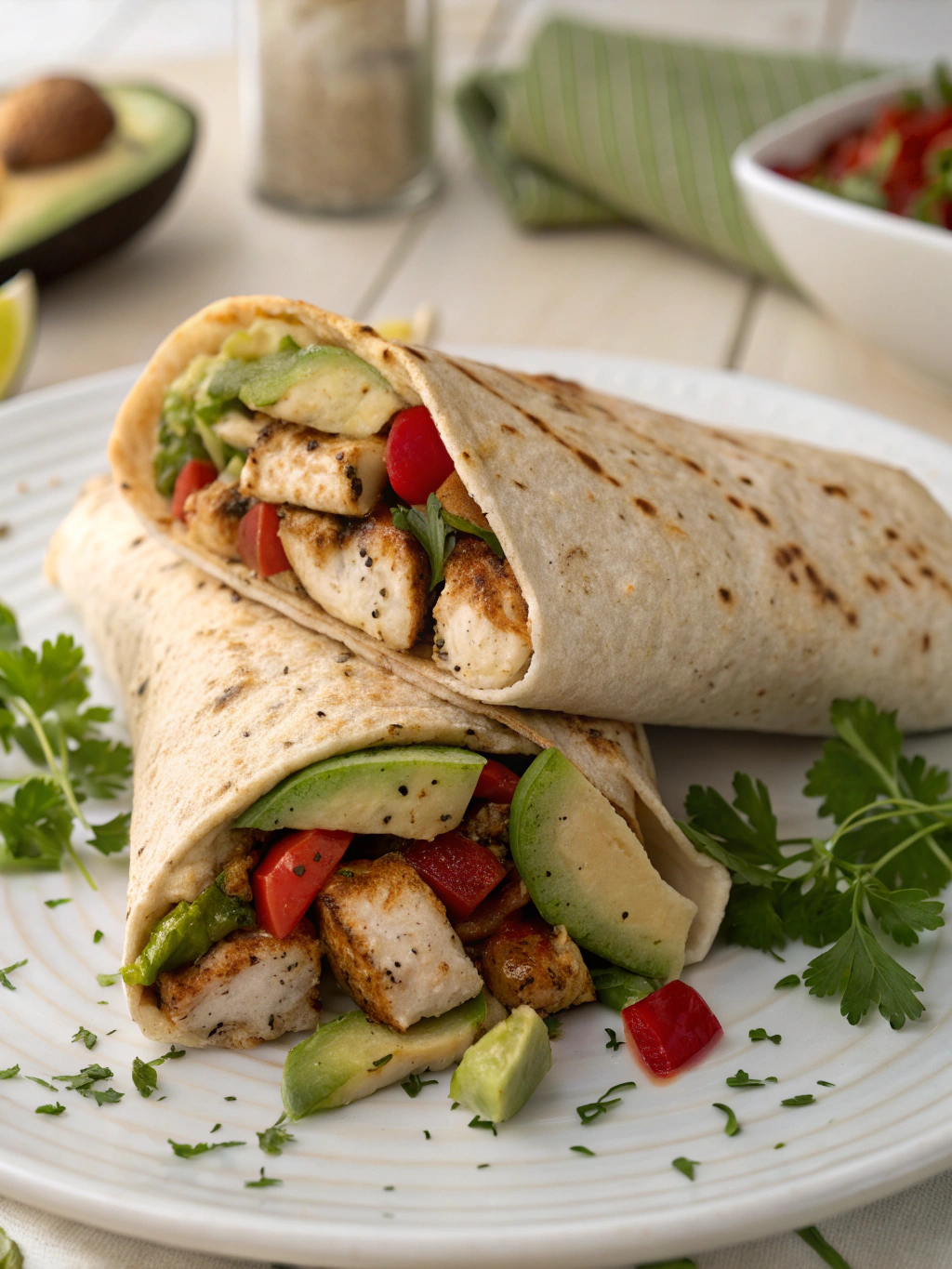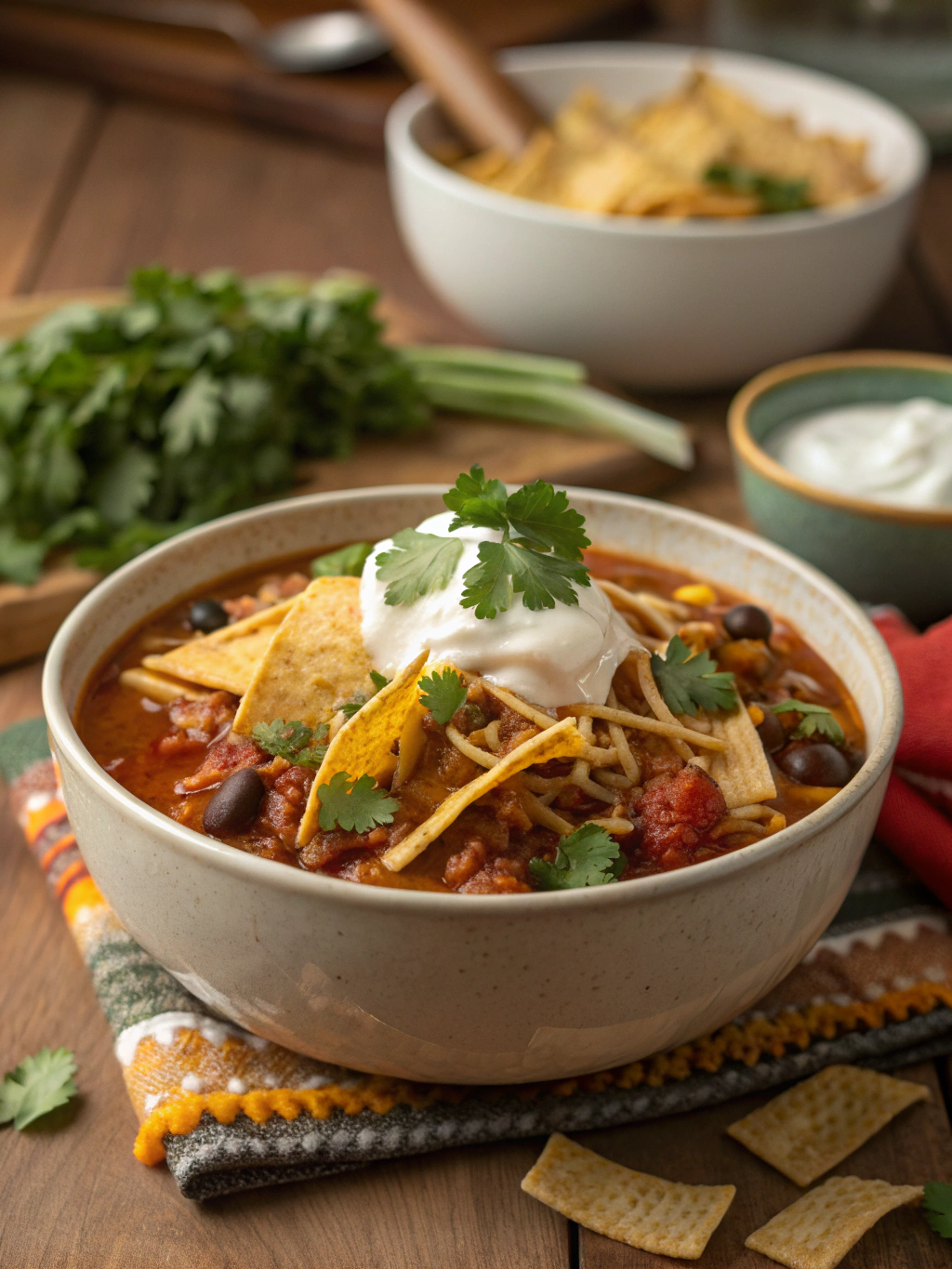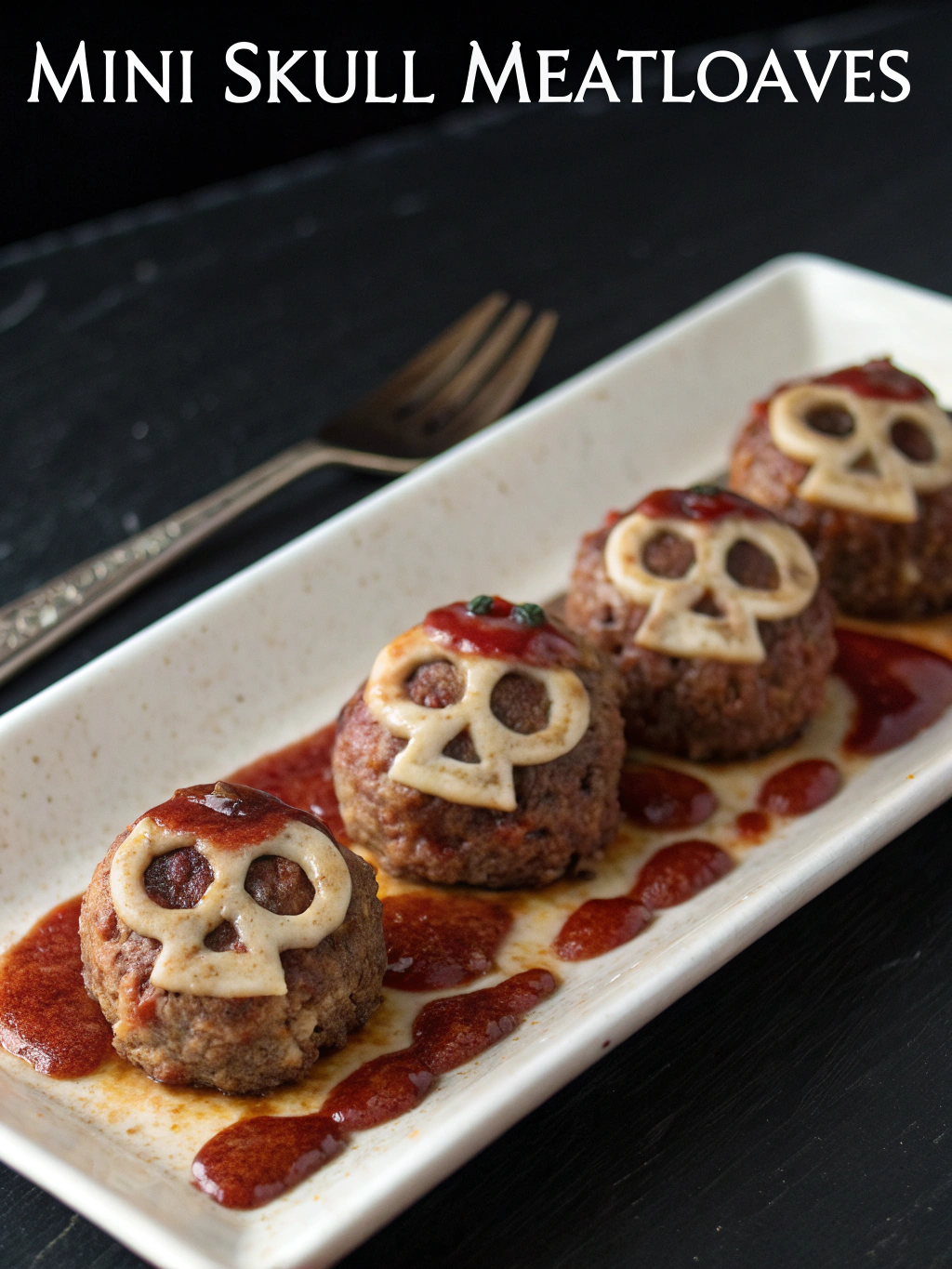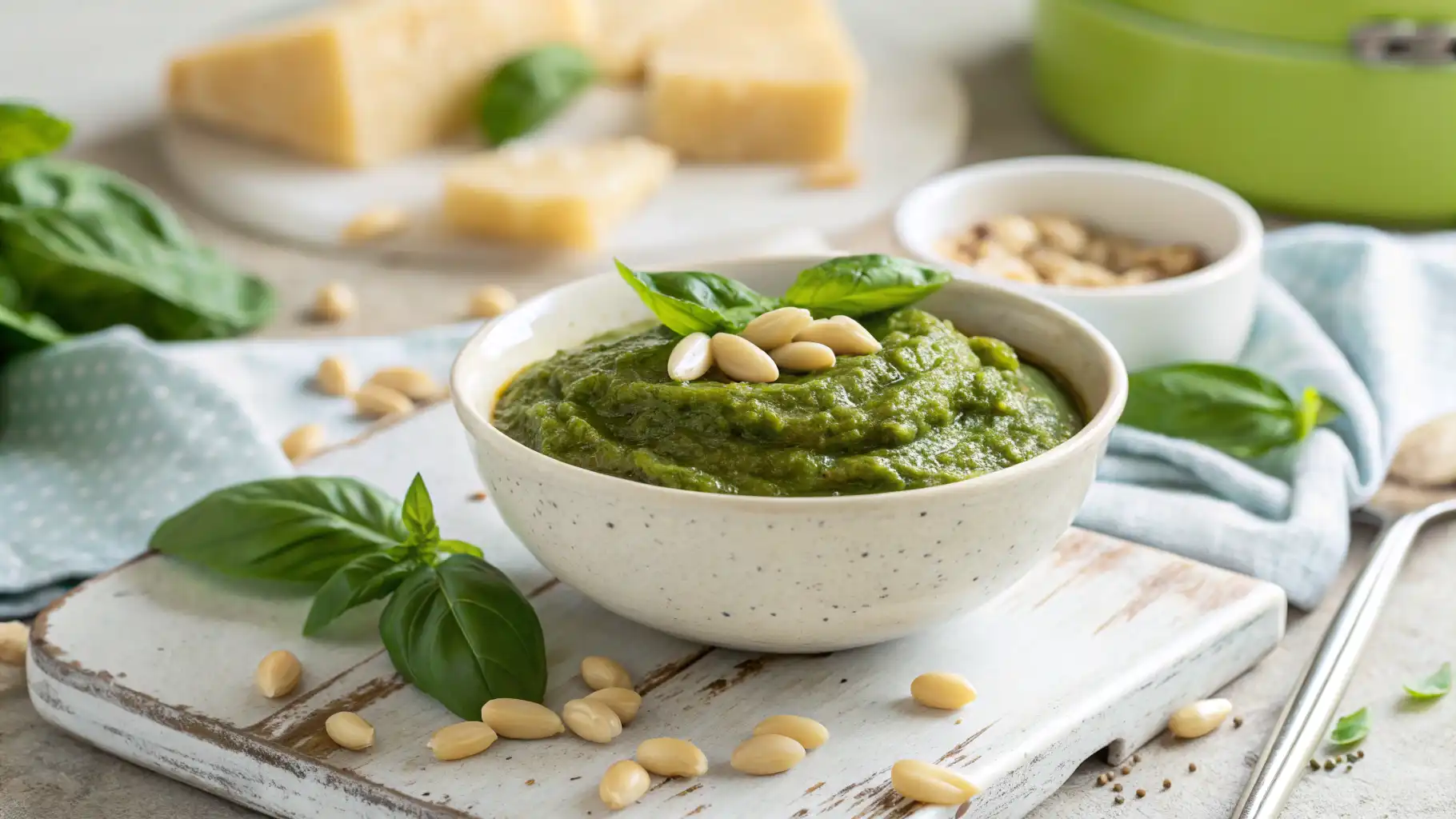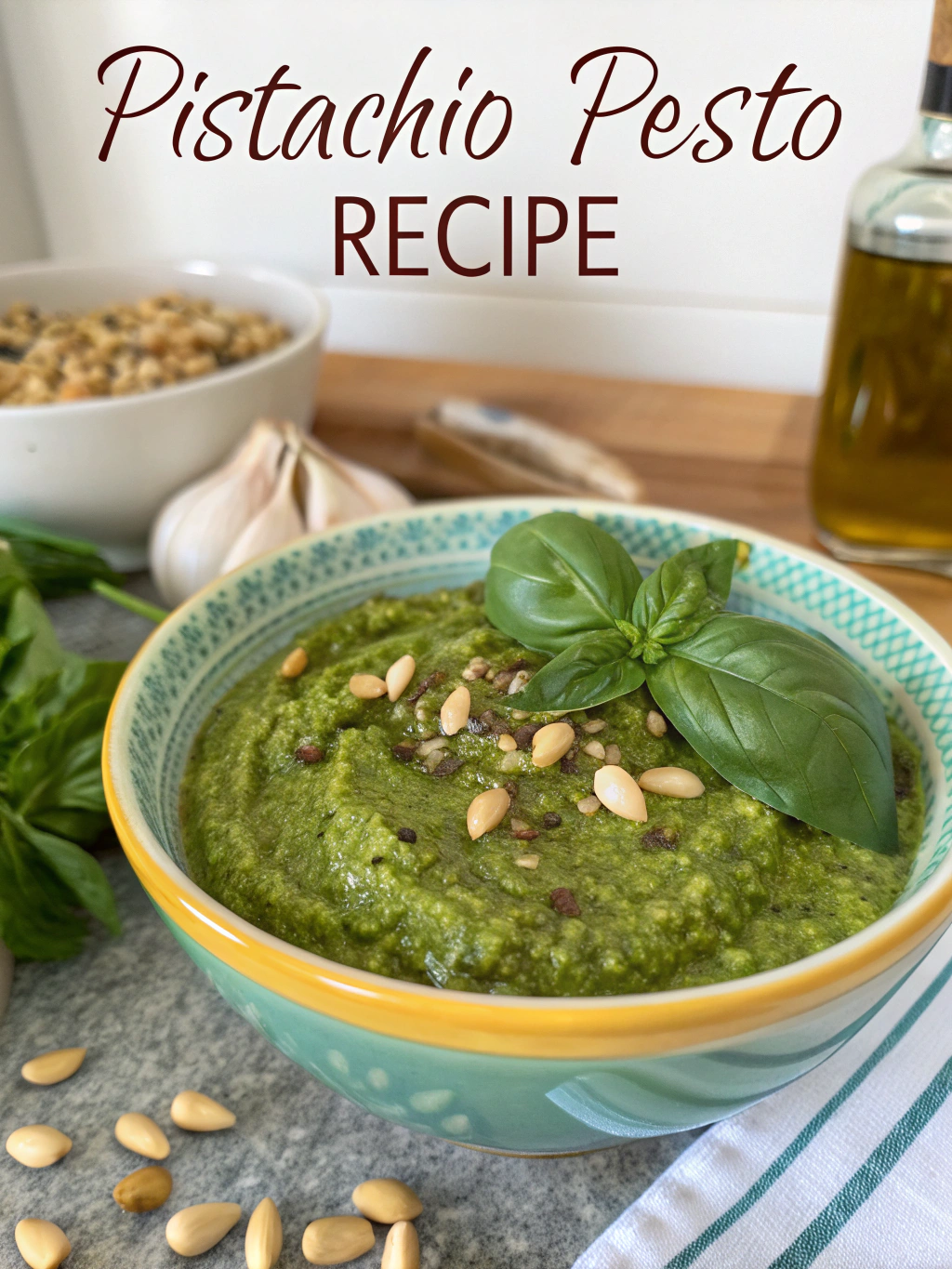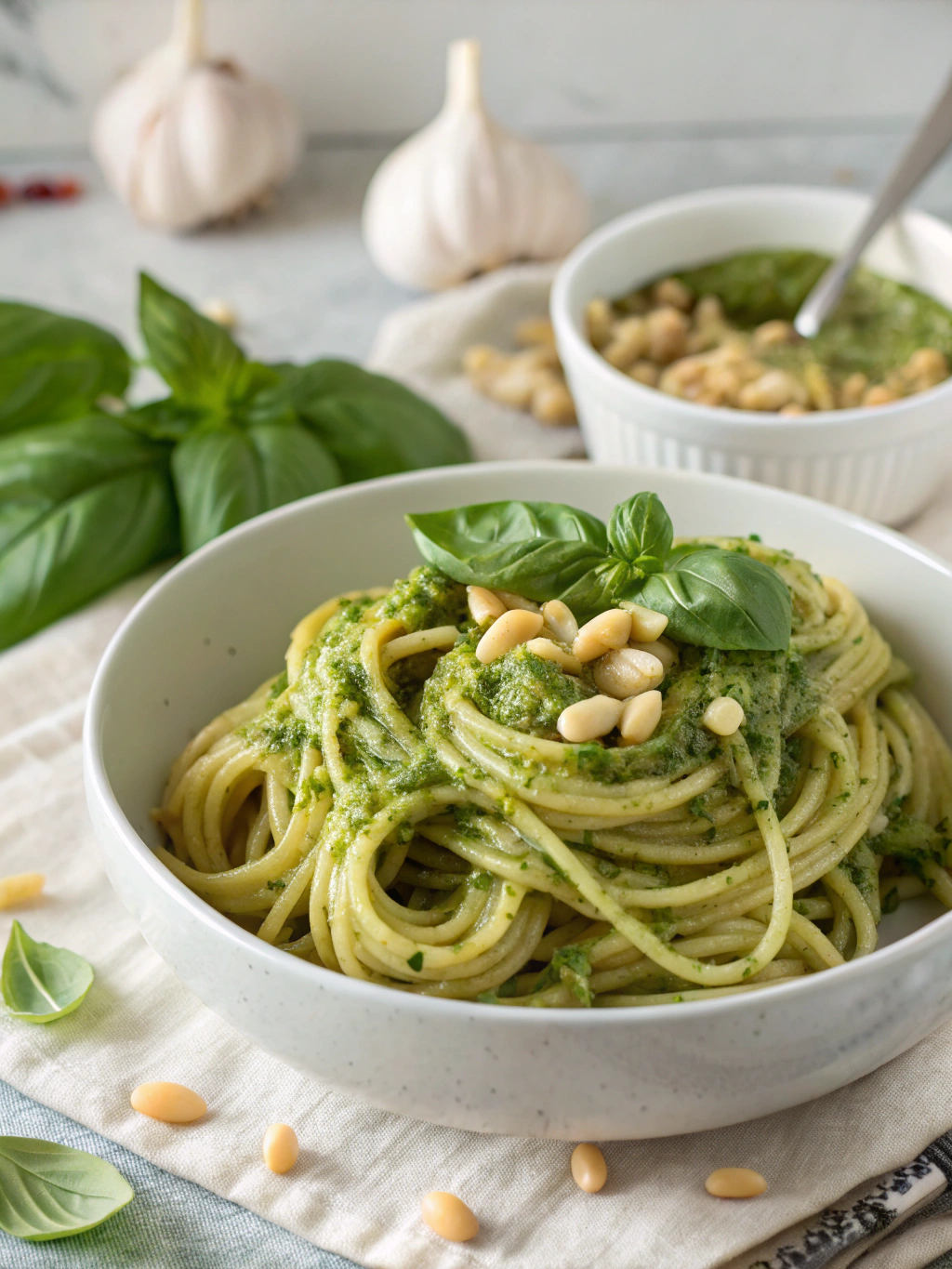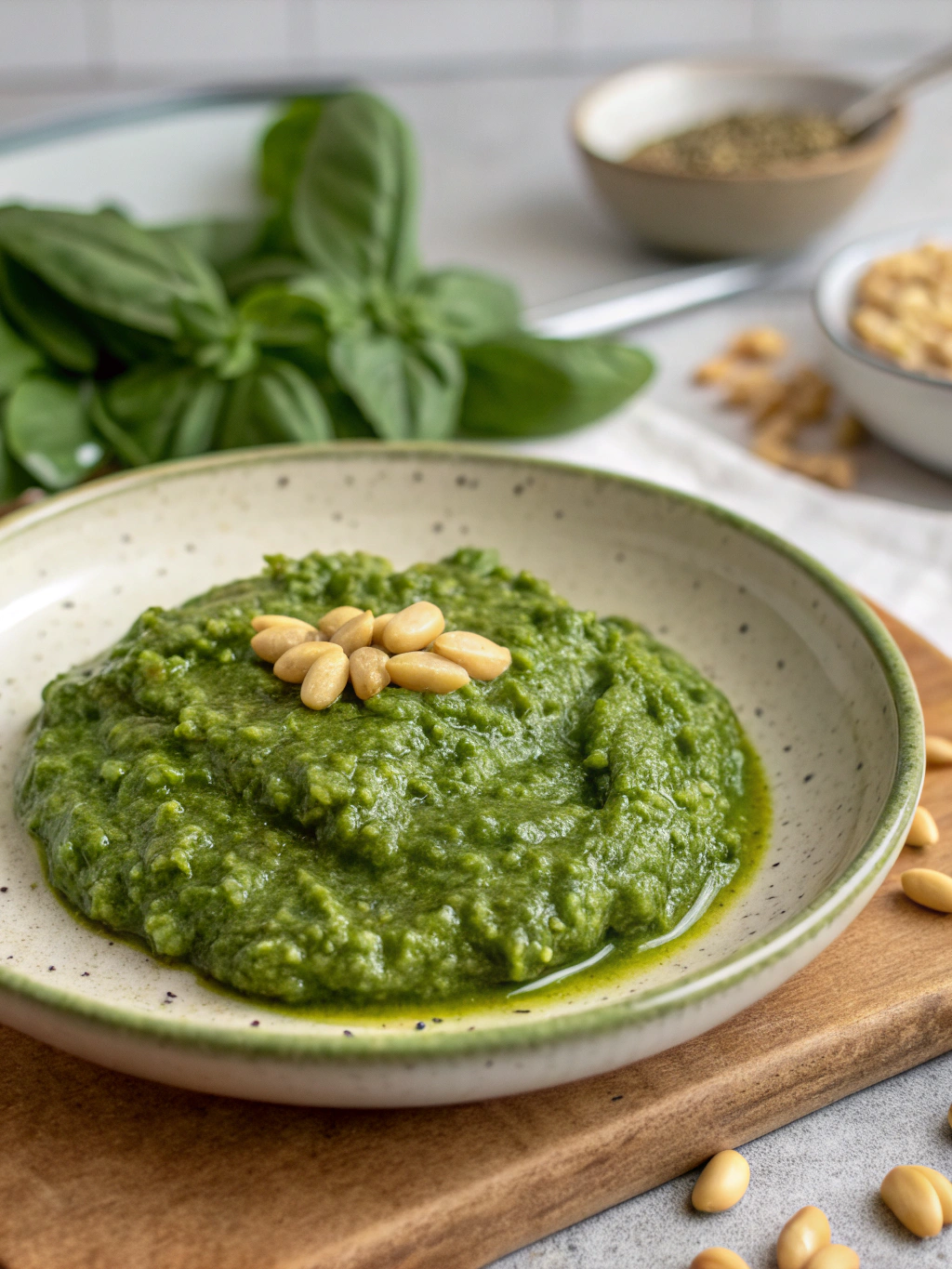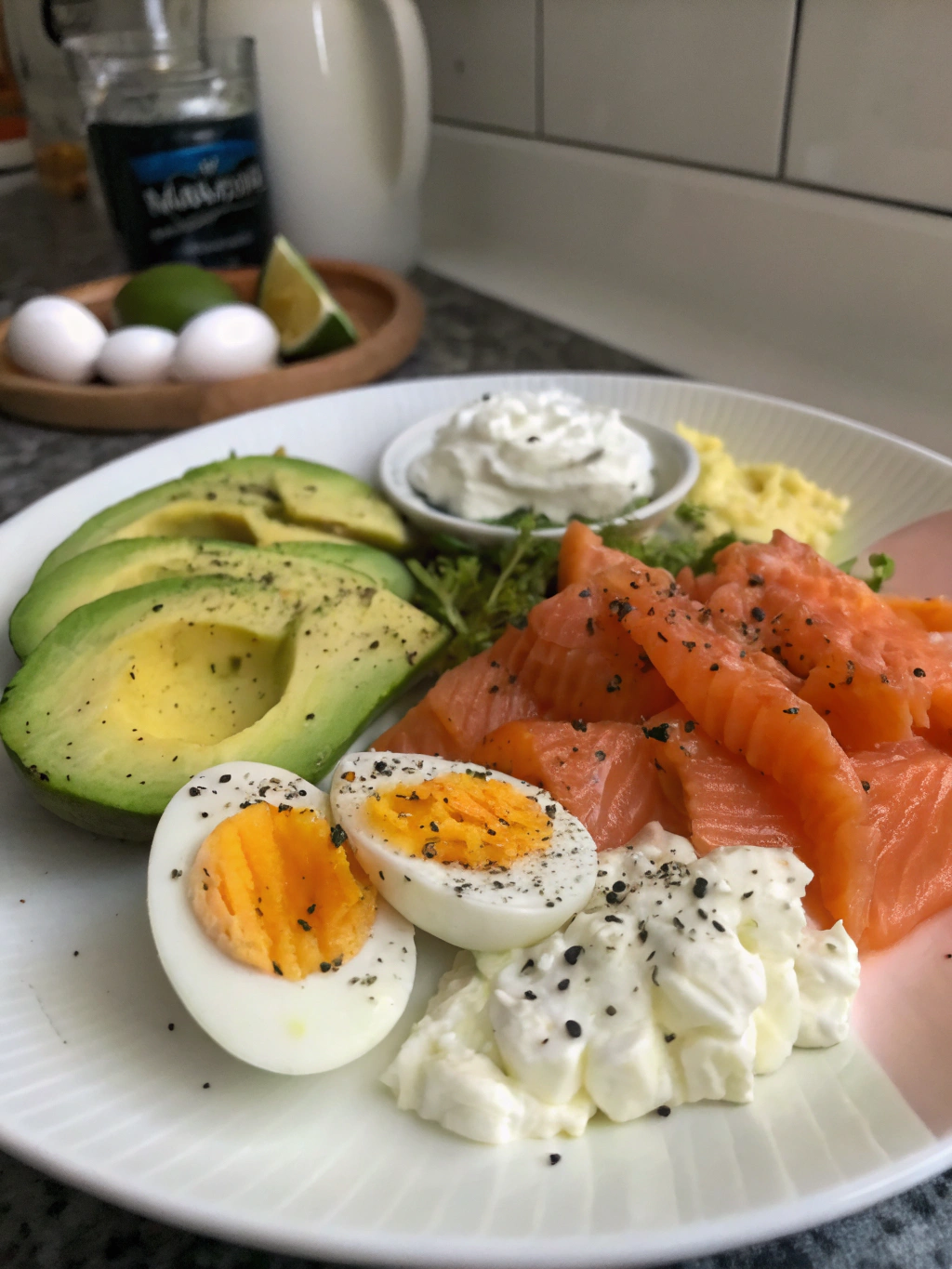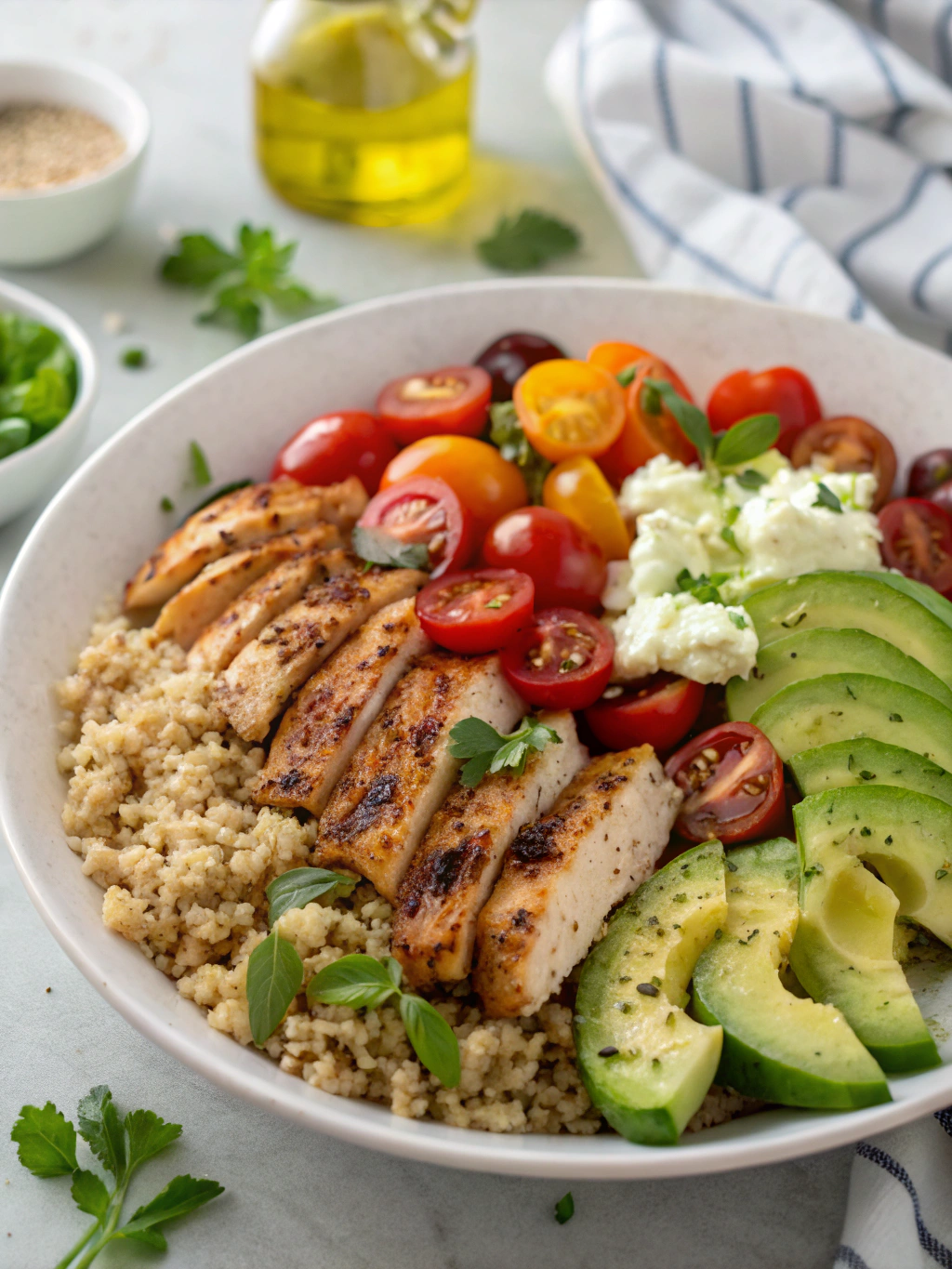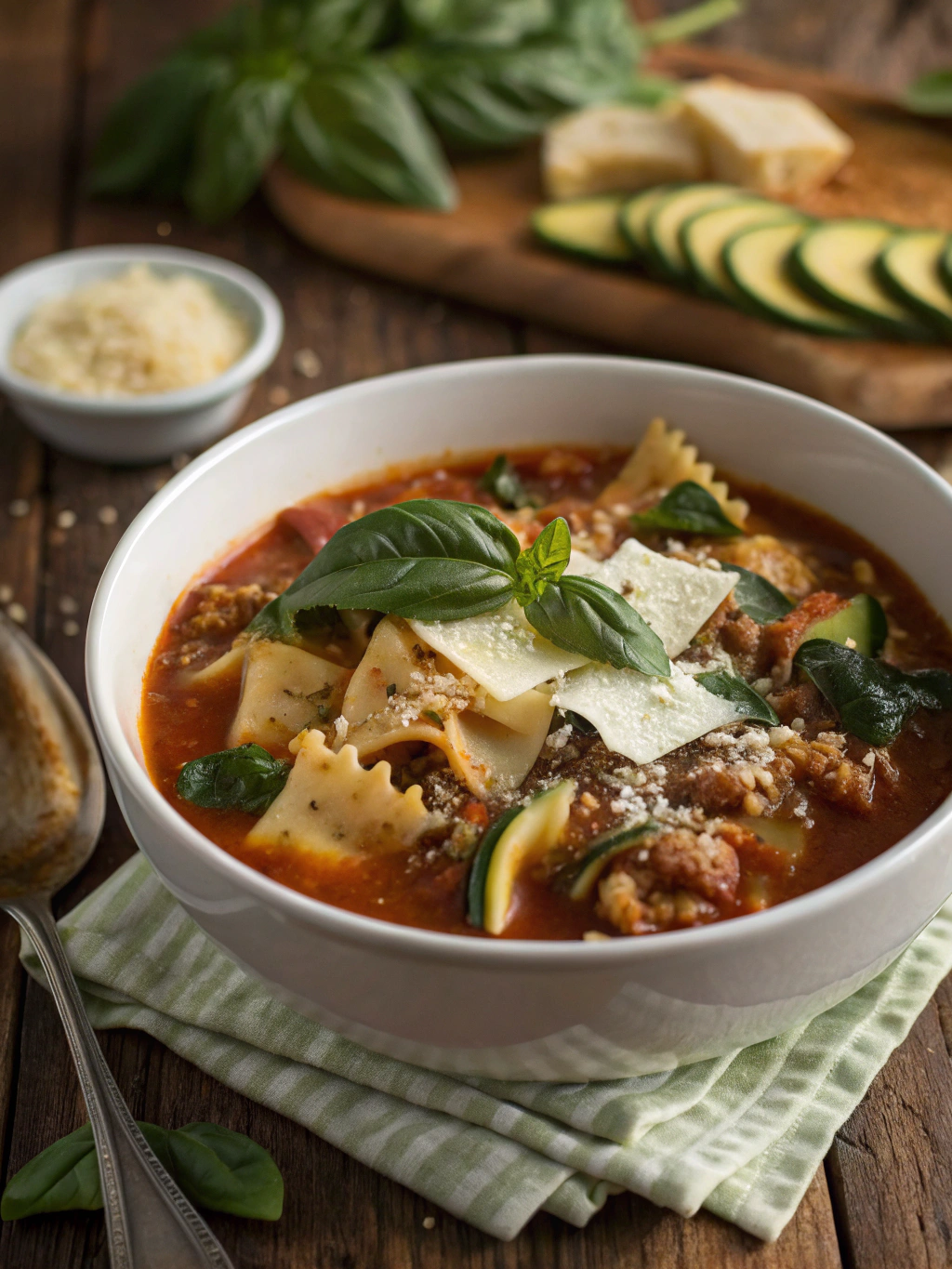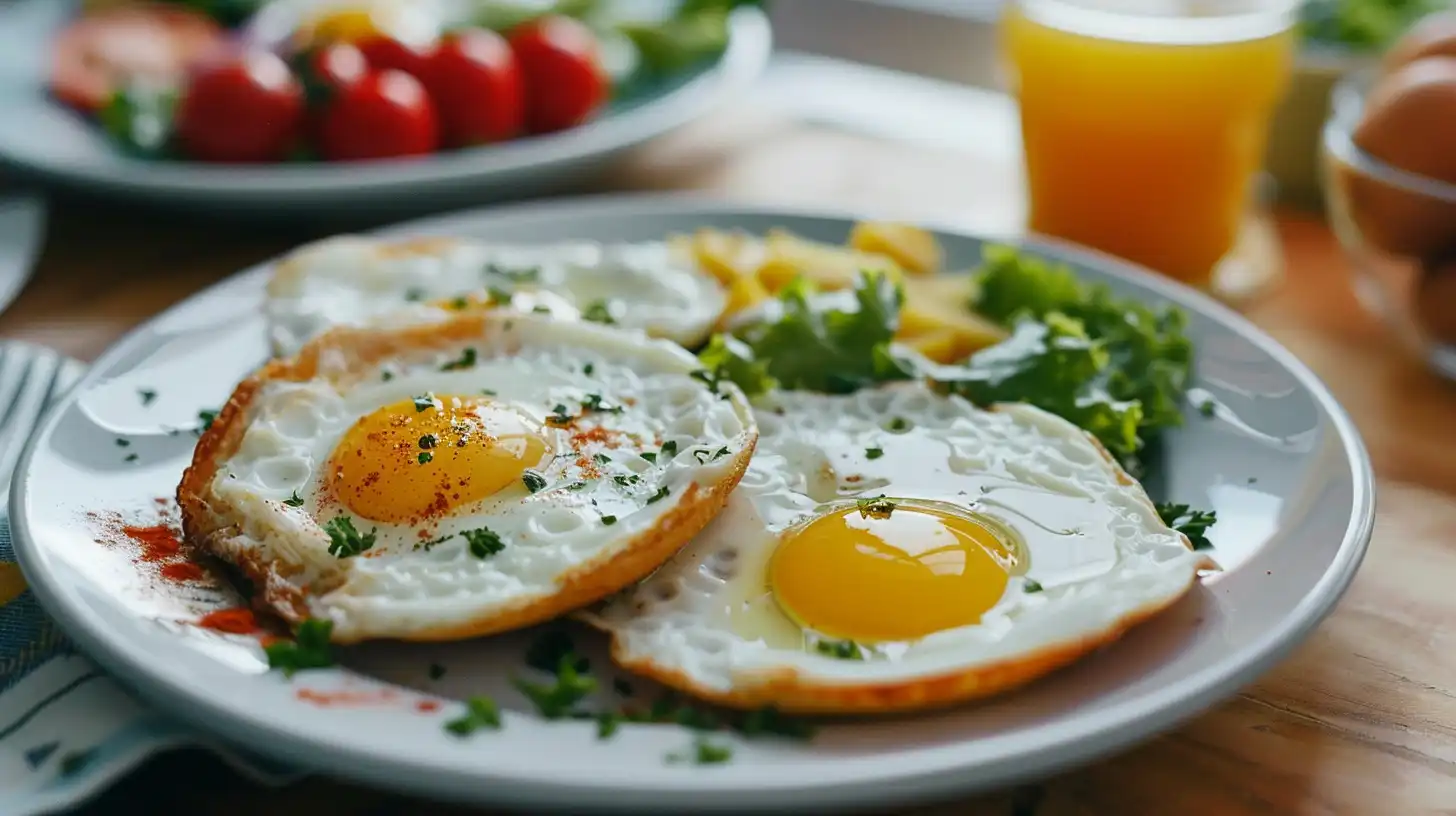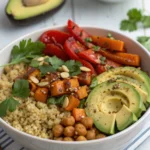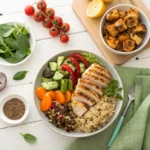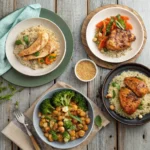Can a midday meal with only plants reliably give you 20–30 grams of protein and still taste amazing? Many cooks doubt it, yet research and practical meal plans show vegetarian lunches can meet protein needs while staying fast and flavorful. In this article we’ll show exactly how to build satisfying, nutrient-dense lunches that hit protein goals without meat.
High protein vegetarian lunch ideas work for busy professionals, fitness enthusiasts, and families. The Harvard T.H. Chan School of Public Health highlights plant proteins like legumes, soy, nuts, and whole grains as excellent building blocks for meals, and the USDA confirms balanced plant-based plates can meet daily protein needs (healthy vegetarian meals; USDA guidelines). I’ve planned hundreds of weekly menus and coached clients to hit macro targets while enjoying varied lunches, so I combine tested recipes and evidence-based tips here.
Below, I’ll partly answer the main question right away: a well-composed plant lunch built from legumes, tofu/tempeh, dairy or dairy alternatives, and whole grains or seeds delivers the 20–30 g protein most adults want at lunch. You can prepare many options in 10–30 minutes, or batch-cook for a week of ready meals. In this article, we will cover ingredients and substitutions, timing and prep, step-by-step recipes, nutrition facts, healthier swaps, serving ideas, common mistakes, storage tips, and concise FAQs to help you cook confidently.
Table of Contents
Ingredients
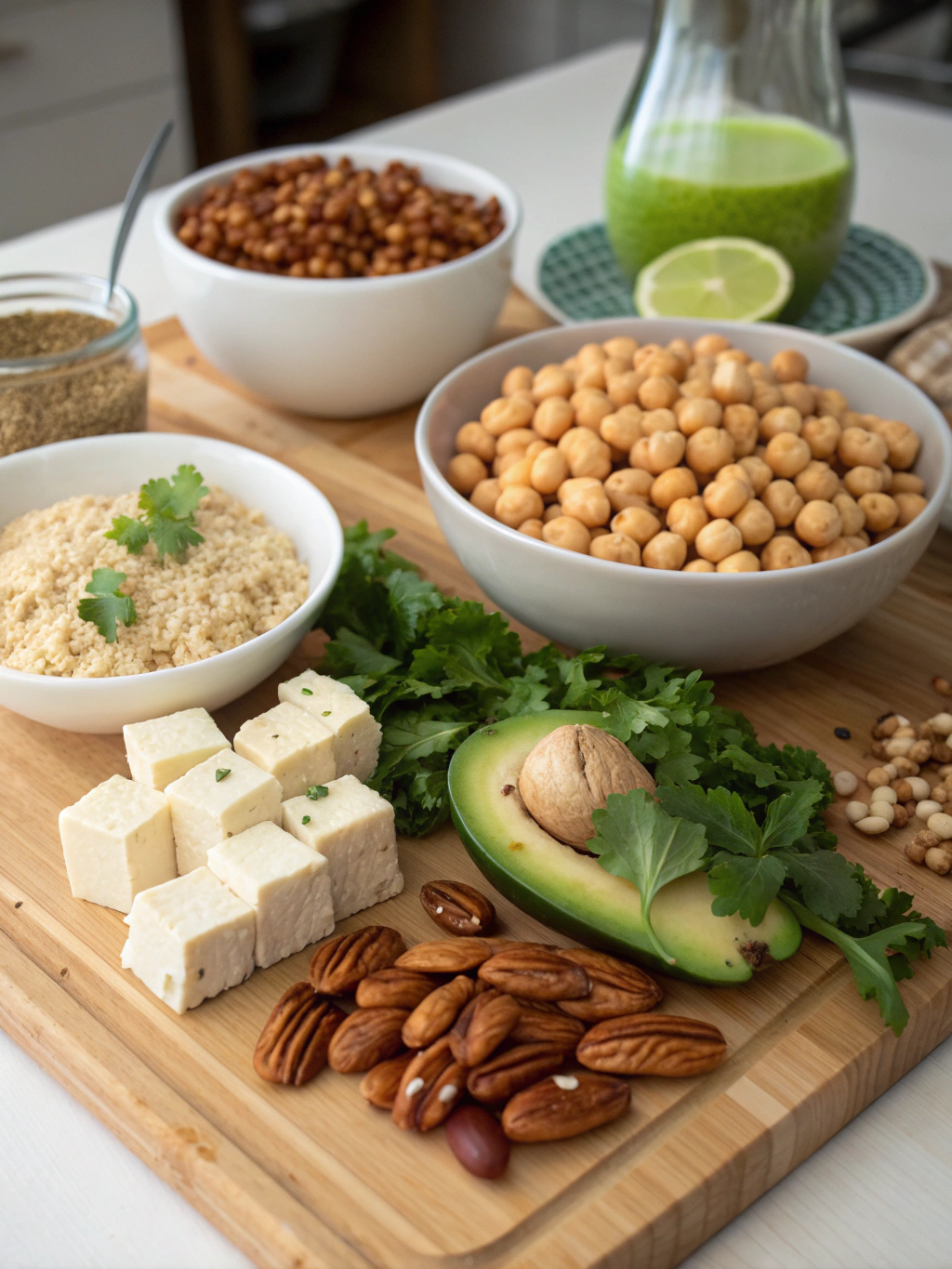
Start with protein-rich building blocks and taste-boosting accents. Use fresh textures (greens, crunchy seeds) and bold flavors (herbs, citrus, fermented condiments) to make plant proteins sing.
- Primary proteins: cooked lentils, chickpeas, black beans, extra-firm tofu, tempeh, cottage cheese, Greek yogurt, edamame.
- Whole grains & seeds: quinoa, farro, buckwheat, freekeh, hemp seeds, pumpkin seeds, chia.
- Veggies for volume & micronutrients: roasted sweet potato, spinach, bell peppers, broccoli, cherry tomatoes.
- Flavor enhancers: tahini, miso, soy sauce/tamari, lemon, za’atar, smoked paprika.
- Healthy fats: avocado, olive oil, walnuts, almonds.
Substitutions: swap tofu for tempeh to increase fermented flavor; use cottage cheese or strained yogurt to boost protein quickly; choose gluten-free grains if needed. For portable lunches, roast chickpeas and pack grains separately to keep textures crisp.
For more recipe inspiration that uses grains and legumes together, try our high-protein pasta recipes for vegetarian lunches naturally loaded with extra protein.
Summary: Focus on legumes, soy, dairy or fortified alternatives, whole grains, and seeds. Mix textures and flavors, and use substitutions to match dietary needs.
Timing
Efficient timing saves busy cooks hours each week. Below I break down realistic prep vs. cook times so you can choose quick builds or batch-cook days.
- Quick builds: 10–20 minutes (e.g., chickpea salad, tofu stir-fry).
- Batch-cook session: 60–90 minutes for 3–5 lunches (roast vegetables, cook grains, bake tempeh).
Compared to average snack recipes, many high-protein vegetarian lunches require only modest extra time; batch-prepping cuts active time later by roughly 30–50%. If you want grab-and-go lunches, follow our meal-prep pacing and techniques described in our high-protein meal prep guide.
Timing table (typical)
| Recipe type | Active time | Total time |
|---|---|---|
| Chickpea & avocado salad | 10 min | 10 min |
| Tofu grain bowl | 20 min | 30 min |
| Batch roasted grain & legumes | 60 min | 90 min |
Plan one 60–90 minute cook day to cut weekday assembly to 10 minutes. That strategy pays off for time-savings and consistent protein intake.
Step-by-Step Instructions
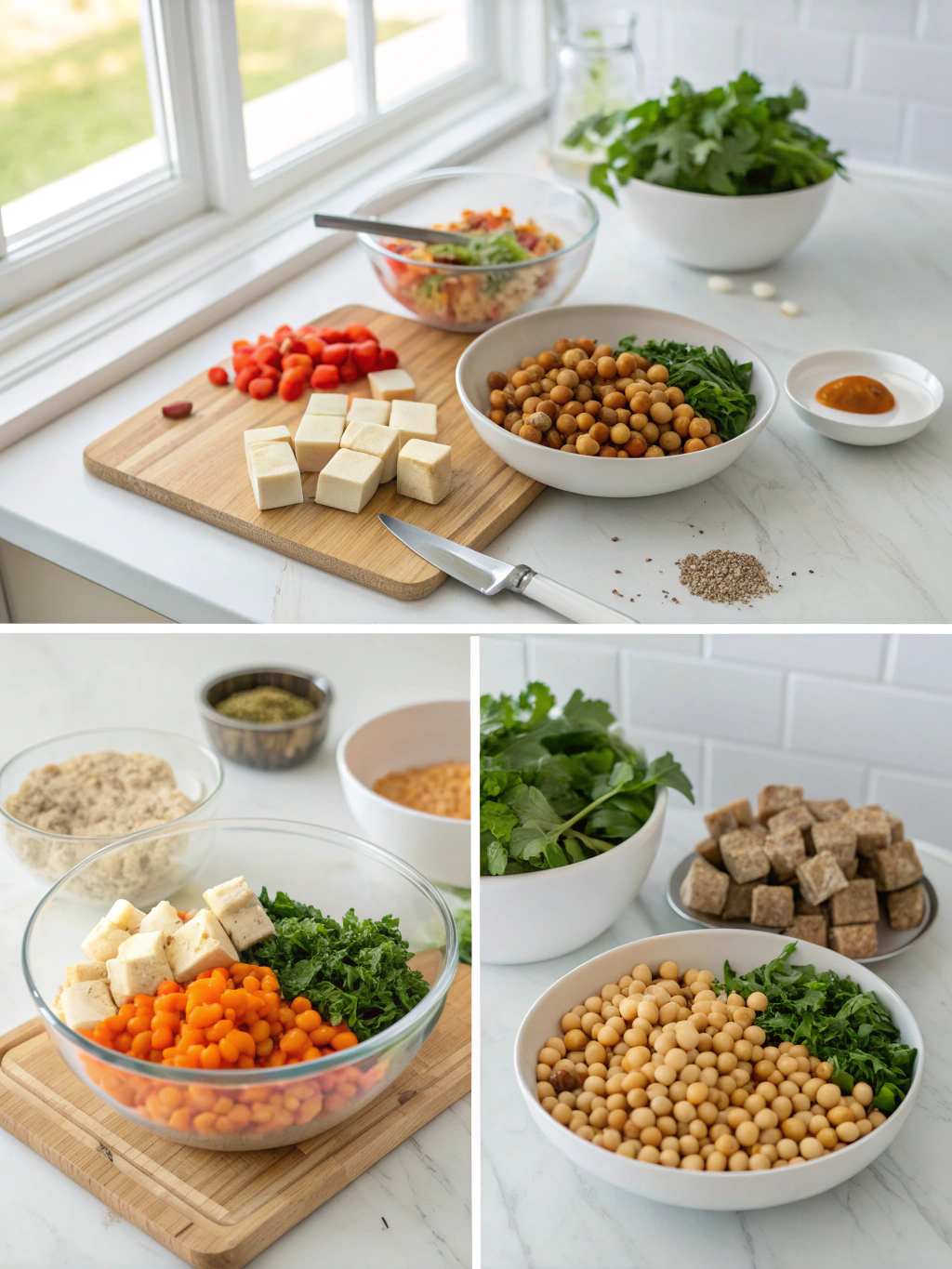
Step 1 : Build a base
Choose a grain or greens base. Cook quinoa (1 cup dry yields ~3 cups cooked) or toast farro. For speed, use pre-washed spinach or mixed greens. Place 1–1.5 cups cooked grain or 2 cups greens per serving.
Step 2: Add 20+ grams of protein
Add a protein portion: 1 cup cooked lentils (18 g), 1 cup edamame (17 g), or 6 oz extra-firm tofu (20 g). Season and sear tofu or roast legumes for texture. If you prefer sandwiches, layer high-protein fillings into whole-grain bread to make satisfying meals. Try our high-protein sandwiches for ideas.
Step 3 : Layer vegetables and fats
Roast or quickly sauté vegetables to add warmth and depth. Top with 1 tablespoon hemp or pumpkin seeds and a drizzle of tahini or olive oil for healthy fats and extra calories when needed.
Step 4 : Dress and finish
Use citrus, yogurt-based dressings, or miso vinaigrette. Acid brightens flavors and helps the protein blend tastefully. Pack dressings separately for crispy salads, or toss bowls just before serving.
Practical tip: Press tofu dry 10 minutes before cooking to improve browning. Toast seeds in a dry skillet for two minutes to amplify nuttiness.
Summary: Build bowls in four steps: base, protein, vegetables/fats, and dressing. Follow these steps to hit protein goals and keep flavors balanced.
Nutritional Information
Understanding macros helps you plan. Below are typical nutrition profiles for three common high-protein vegetarian lunches. Values approximate; adjust for brands and portion sizes.
| Meal | Calories | Protein | Fiber |
|---|---|---|---|
| Lentil grain bowl (1 serving) | 520 kcal | 28 g | 14 g |
| Tofu & quinoa bowl | 600 kcal | 30 g | 8 g |
| Chickpea avocado salad | 420 kcal | 20 g | 10 g |
Data insight: combining legumes with seeds or dairy raises protein quality and boosts essential amino acids. For athletes, aim for 0.25–0.4 g protein per kg body weight at each meal; personalized plans work best. For evidence-based guidance, consult BBC resources and clinical nutrition advice.
Summary: Typical lunches deliver 20–30 g protein and substantial fiber; combine protein sources to improve amino-acid balance.
Healthier Alternatives
Make simple swaps to reduce sodium, increase fiber, or meet vegan/gluten-free needs. Small changes keep flavor while improving nutrition.
Lower-sodium swaps
- Use low-sodium tamari instead of soy sauce and fresh lemon in dressings.
- Rinse canned beans to remove excess sodium.
Vegan & gluten-free options
- Swap dairy for high-protein plant yogurt or silken tofu dressings.
- Choose quinoa or buckwheat instead of wheat-based grains to stay gluten-free.
For more balanced vegetarian pasta bowls that increase protein without gluten, see our high-protein pasta page for clever swaps and pairings.
Summary: Replace salty condiments and common allergens with targeted swaps to suit dietary needs without losing protein or taste.
Serving Suggestions
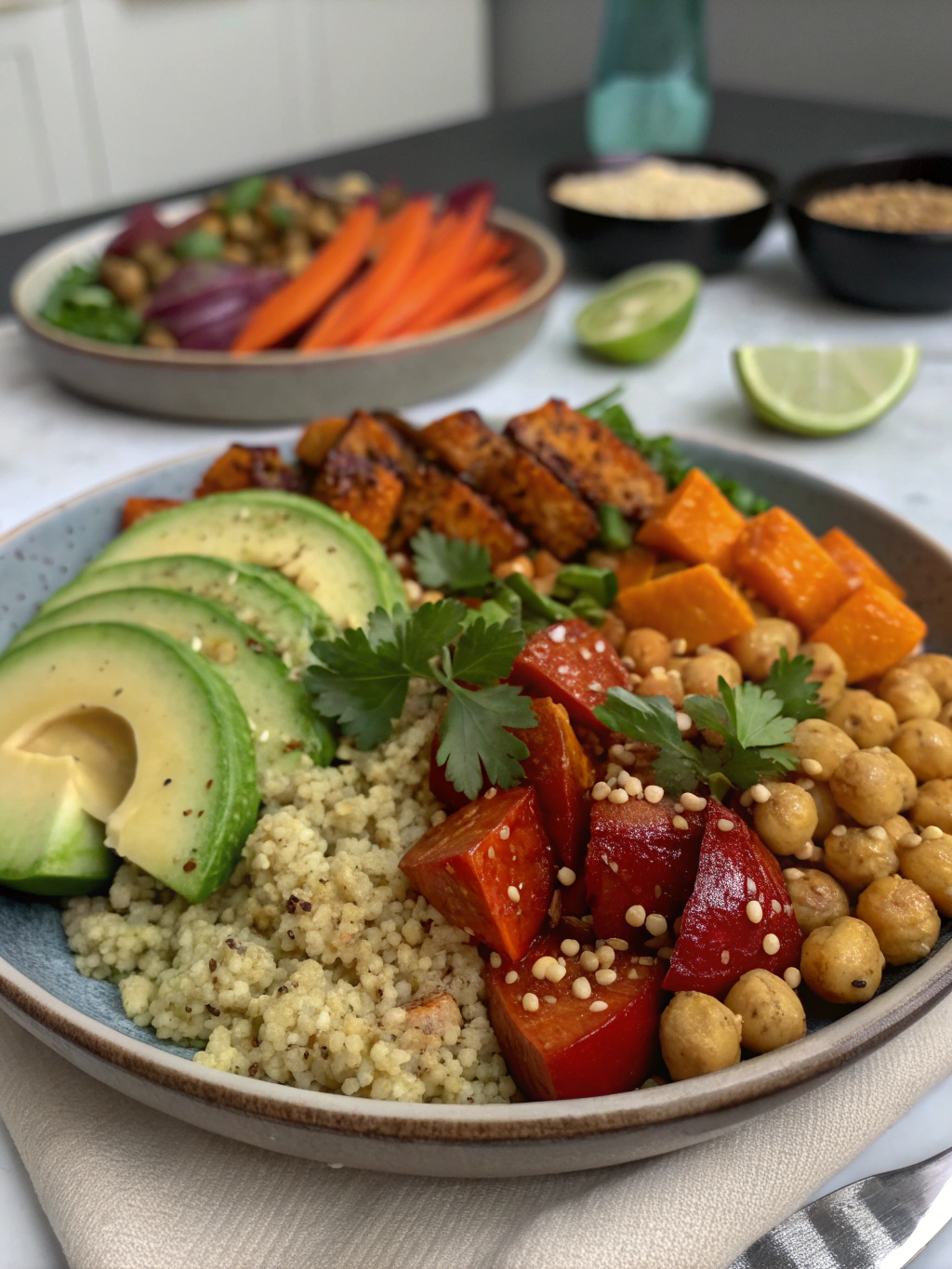
Serve bowls warm with a side of crisp vegetables. Try these presentation tips to keep meals exciting:
- Layer contrasting colors in mason jars for portable lunches.
- Serve toasted flatbread on the side for scooping and added texture.
- Offer small condiment pots (yogurt-herb dip, chili oil) so guests customize intensity.
For sandwich lovers, pack robust fillings into sturdy whole-grain bread to prevent sogginess and keep protein visible and tasty. Our high-protein sandwiches guide shows portable options and build techniques.
Summary: Present lunches with color contrasts, separate dressings for texture, and portable packaging to keep meals fresh and appetizing.
Common Mistakes to Avoid
- Underestimating protein portions: measure legumes and tofu for accurate intake.
- Skipping acid or salt: meals taste flat without finishing flavors.
- Packing wet dressings with greens : separate dressings to prevent limp salads.
Avoiding these errors keeps meals nutritious and enjoyable. Many cooks lose flavor by under-seasoning or overcooking vegetables, so taste and adjust as you build.
Summary: Measure protein, season deliberately, and separate dressings to maintain texture and flavor.
Storing Tips
- Refrigerate cooked grains and legumes in airtight containers for up to 4–5 days.
- Store dressings in small jars; keep crunchy toppings separate until serving.
- Freeze portions of tofu or tempeh marinades for up to 2 months; thaw in the fridge overnight.
Label containers with dates and use clear containers so you can quickly select meals during the week. If you need weekly meal templates, our high-protein meal prep lunch guide provides planning templates and shopping lists.
Summary: Store components separately, label containers, and freeze only items that retain texture after thawing.
Conclusion
Creating a delicious High protein vegetarian lunch at home requires planning, smart protein combinations, and bold seasoning. Use legumes, tofu/tempeh, whole grains, and seeds to reach protein goals while enjoying variety. Try batch-cooking once per week, keep dressings separate, and swap ingredients to fit dietary needs. Share your favorite combos or questions below, I’ll respond with personalized suggestions based on experience and nutrition best practices.
Frequently Asked Questions
How can I get enough protein in a vegetarian lunch?
Combine legumes (lentils, chickpeas), soy (tofu, edamame), dairy or fortified alternatives, and seeds. Aim for 20–30 g protein per meal by pairing a cup of cooked lentils or quinoa plus a tablespoon of hemp or a serving of Greek yogurt. Measure portions for accuracy.
What are quick high-protein vegetarian lunch ideas?
Try a chickpea salad with Greek yogurt dressing, a tofu stir-fry over quinoa, or an edamame and farro bowl. These options assemble in 10–20 minutes when you use pre-cooked grains or canned legumes for fast, protein-rich lunches.
Can high-protein vegetarian lunches support weight loss?
Yes. Protein increases satiety and preserves lean mass during weight loss. Combine protein with fiber-rich vegetables and whole grains, control portion sizes, and avoid energy-dense dressings to create meals that support calorie goals and fullness.
How should I store high-protein vegetarian lunches safely?
Refrigerate cooked components within two hours in airtight containers and eat within 4–5 days. Keep dressings and crunchy toppings separate to preserve texture. For longer storage, freeze portions of cooked grains or marinated tofu and thaw in the fridge overnight.
Author: I’m Emma, your foodie bestie with a love for all things tasty and easy to make. I’m here to inspire you with fun, feel-good recipes you’ll actually want to cook!
